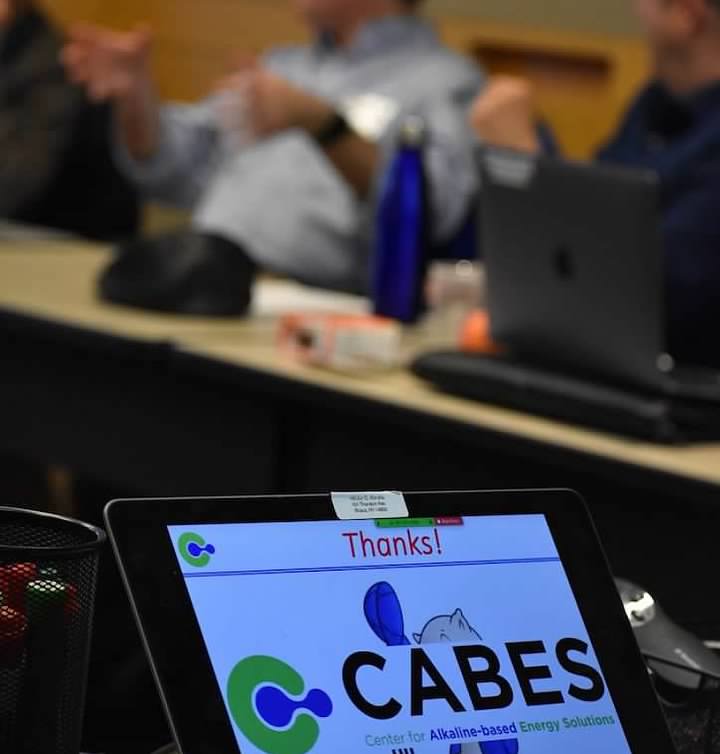About CABES
The Why, Who and What of the CenterTo deliver the clean energy technologies we need, we must understand the materials that comprise them.
About

An early strategy session at CABES
Who is CABES
We are scientists from different fields working together to advance understanding of how catalysis works at high pH. CABES has been carefully assembled from University and National Lab professors, scientists, postdoctoral associates, graduate students and partners to include the exact set of skills needed to address these questions.
What is CABES
To better understand how the chemical reactions behind fuel cells, electrolyzers, and metal batteries work, including what makes them not work, requires understanding of that chemistry, physics and materials science at different scales, from atoms to electrodes, and under real operating conditions.
Understanding electrochemical energy conversion reactions, from atoms to electrodes, under real operating conditions.
Why CABES Matters
Every study that models domestically independent, secure, and sustainable energy system for the United States relies heavily on renewables and includes hydrogen in one form or other. Hydrogen is an essential form of storing the electricity from sun and wind and directly transferring that energy to a time when it’s wanted and to other places, like transportation, where it’s needed. CABES work will help advance the technology of low-cost, highly durable alkaline fuel cells, electrolyzer, and related devices, to enable that future energy system.
Energy and Materials
Energy
CABES is a collaborative, university and national lab research center supported by the US DOE, Office of Science as one of the Energy Frontier Research Centers (EFRCs). We are responding to needs defined over the course of more than 20 years of study and analysis for advancing the science of energy conversion, storage and application.
MATERIALS
Many EFRCs are advancing understanding of materials processes that will move our energy systems from heat engines to technologies that directly convert energy from resource into application. A good example (outside of CABES) is light: bulbs are changing from indirect filament-based, where much of the energy delivered comes as heat, to LEDs where electronic properties of materials generate light more directly.
TECHNOLOGIES
In energy, too, technologies are enabling a shift from indirect energy conversion, like using chemical energy to generate heat which in turn is used to generate electricity – to direct energy conversion. A fuel cell is one example. Fuel cells are the most efficient means known of harnessing electricity from chemical fuels, as they allow us to directly access electrons exchanged in the chemical reaction.

